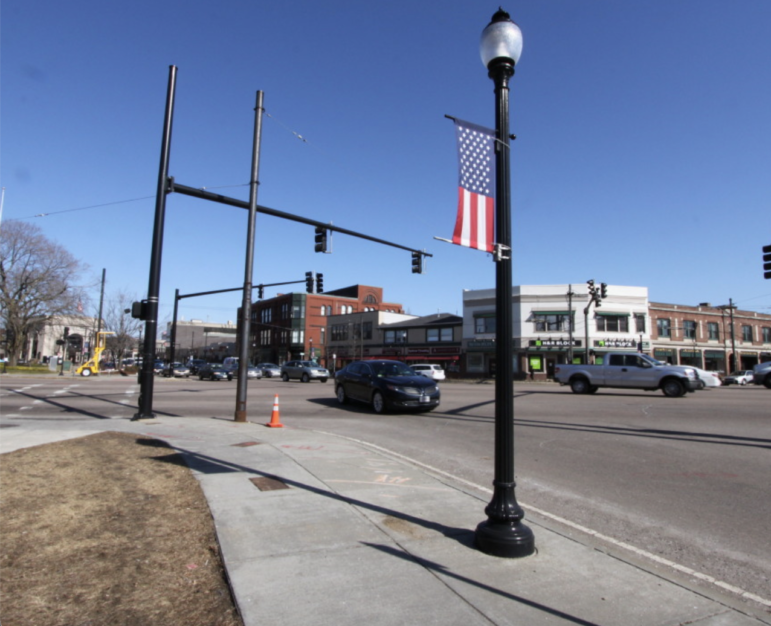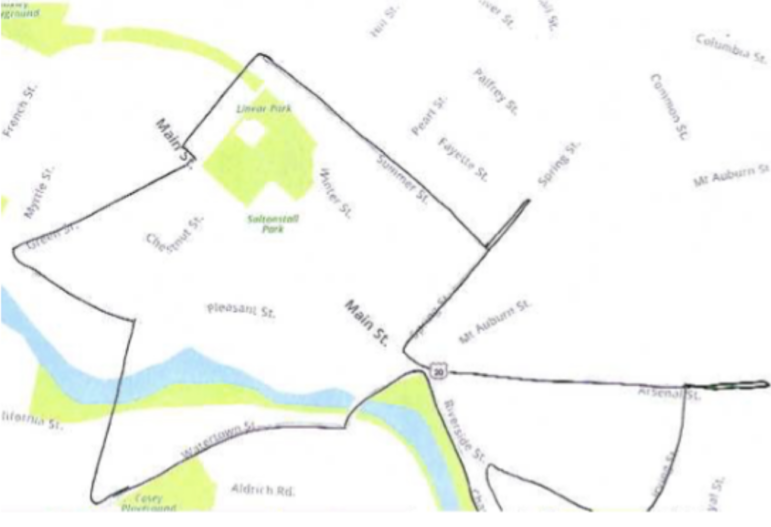
By Linda Scott
Watertown Resident
First, Let’s Nerd Out a Bit:
A study was commissioned by Watertown to set a dollar amount to charge non-residential projects in the City. This was to off-set some of the costs of these projects to Watertown, and the aim was to put this money towards affordable housing in the City. This money is called a “linkage fee.” Part of this 2022 study was to project housing needs for Watertown. Here’s what that report (called the “Watertown Commercial Development and Housing Nexus Study”) says:
“Since new employees will live in a variety of communities, it is necessary to determine the share that will demand housing in Watertown. To estimate the percent of new employees who will demand housing within the city, the results from a survey of employees in office, laboratory, hotel and retail buildings conducted in February and March 2022 were used. This survey measured demand by asking employees whether, as a result of obtaining a job in Watertown, they either moved to the city or sought housing in Watertown but did not move there due to housing costs. Based on the survey results, the percentage of new employees who are expected to demand housing in Watertown is 15.6. This percentage was multiplied by the gross number of new jobs in each industry to estimate the number of new workers who will demand housing in Watertown, which equals 968. The occupational distribution for each industry was then applied to the number of workers in that industry who were expected to seek housing in Watertown to estimate their earnings distribution.”
“Housing Demand. Based on projected new development of 2,600,000 square feet over the next ten years and the likely mix of tenant industries, 6,213 new jobs are estimated to be generated in Watertown by this development. Information on the occupations and earnings of these new employees, in combination with data on the distribution of households by size and number of workers and survey results on the share of employees who moved to or sought housing in Watertown when they obtained a job in Watertown, is used to estimate the demand for new affordable housing units from the projected new development and employment. This analysis projected the need for 360 new housing units to address this demand, including 86 low-income units, 74 moderate-income units and 200 middle-income units.”
Here’s the WatertownMaNews article on the City Council Meeting where the results of this study are discussed: https://www.watertownmanews.com/2022/06/16/council-seeks-payments-from-developments-to-go-to-affordable-housing/
Current Watertown Square Housing: the Specifics

Back to our dive. Because Watertown Square is being targeted by the City for all of this potential development, I did numerous walks, drives, and internet searches to evaluate Watertown Square’s current multifamily housing numbers.
I restricted my search to an area delineated by Gables/Elan Union on Arsenal Street as the farthest eastern point of the Square, to Watertown Street as the farthest southern point, Summer Street as generally the farthest northern point (with a small jut out on Spring Street to about Fayette Street), and just beyond Whites Avenue (Forest Street) and across Main Street, down Green Street to the river, as the farthest western point. The total number of housing units in multifamily buildings in this sample area of Watertown Square is 1,416.
This doesn’t even begin to count the hundreds of single- and two-family houses in the Watertown Square area!
However, if we zoned this whole area for this MBTA Law, we’d be making ourselves even more vulnerable to opportunistic developers, coming in on an as-right basis to build anything they wanted that fit into the zoning code, without us having a meaningful ability to change the project. Zone it, and they will come!
And what would the City’s response be? It’s a familiar refrain: “Sorry. We can’t do anything. It’s zoned that way.”
Obviously, zoning in Watertown Square needs to be looked at and refined, but not like that. I have some ideas about how to approach fulfilling our MBTA Law mandate. I’m not sure they’re good ideas, but I’m sure that you’ll all let me know. Please be kind when you do. They’ll be posted tomorrow, in Part 4.
Linda, thank you for your thoughtful approach to examining the potential problems that could happen if the zoning remains as is or is adjusted based on the MBTA mandate.
Your time-consuming studies and potential results ring true with so many people in Watertown now. So many residents are talking about the overdevelopment in their areas and are totally frustrated with the lack of support from various city departments. You are doing the work that others on our city payroll should be doing and communicating.
I’ve never heard before from so many people that they are thinking of moving out of Watertown, and possibly MA, due to the decisions that politicians are making without considering quality of life issues for neighbors who are in target areas to be more than likely overdeveloped in the near future. People don’t want to be boxed in by these huge buildings and labs and deal with all the traffic and congestion that comes with them. They are concerned with their property values as future potential buyers won’t want to live in these areas.
Watertown and other cities want more people in high-rise apartments who rent here for a few years and move on with their jobs or other needs. They vote for policies and issues that won’t affect them long term. They leave and leave behind the mess they create for the longer-term residents to deal with.
Single-family or two-family homes with families with children are usually the core of a city that keep it stable, establish true neighborhoods and friendships, and have children attend our schools. With our investing millions of dollars in the schools, what will happen with them if you have a majority of renters in these apartments with 1 or 2 bedrooms or studios? These types of units are not conducive to the needs of children.
Are our leaders just thinking of the tax base or are they considering our people in all of these equations? The latter doesn’t seem to be the answer we are hearing right now.
People are moving out of Watertown/MA because it’s too expensive. You fix that by building more housing.
Very true Hannah! We need more housing! Mixed use zoning enables people to live and work in close proximity. Restrictive zoning created this housing crisis, legalizing building will get us out. People only leave because they can’t afford it! Also, people should be allowed to build what they want on their property #YIMBY
Actually, it’s not so simple as build more housing to fix the rising cost problem. We have built many, many housing units over the past two decades and that has done nothing to stem skyrocketing costs which are changing the character of our town.
Thanks, Joan.
I think that Watertown has always been a welcoming place for all people. That’s a core value in our community. But to be able to help others, as the old saying goes, you need to put your oxygen mask on first.
If we don’t build and preserve carefully, we’ll just become a convenient pass-through community on people’s way to their “real” homes, where they’re not bombarded by air and noise pollution, traffic that never stops, and nature that is fighting to survive.
Hi Hannah,
Maybe. That is the conventional wisdom, I know. But I’m beginning to think that this is an example of the old expression: The definition of crazy is doing the same thing over and over again and expecting a different result.
No one can say that we haven’t been building a lot of housing. Just look at Pleasant Street, for one example. But in general, older housing stock is cheaper housing stock. Newer housing is proving to be much more expensive.
The free market should decide! Why should others control what you do with your property?
It is in our city’s best interest to continue to grow and building mixed-use housing is that solution.
Simple supply and demand show that when supply is low and demand is high prices rise! We need to continue to build housing so there is enough supply to meet demand, and wealthy people will trend to the newer builds leaving the older stock to be more affordable – free market solution!
Actually real estate markets tend to react in more complicated ways than Economics 101.
Particularly in desirable areas on the coasts, real estate prices tend to be very sticky. Therefore it takes considerable downward pressure for an extended period of time to drive prices down to any degree.
Also the introduction of high end, high price real estate into a market has a tendency to drive prices up in existing stock as we have seen in Watertown.
When most of Watertown’s legacy housing stock was built, builders were building a lot of working class housing. That is no longer the case, but rather the opposite. This creates a housing squeeze for those of modest means, who spend increasing percentages of their resources on housing. In more extreme cases, this results in homelessness.
Building more–though necessary–will not solve the affordability crisis. We need to figure out why the market is not providing the most necessary commodity. That is affordable housing. The markets are not serving all segments of our society.